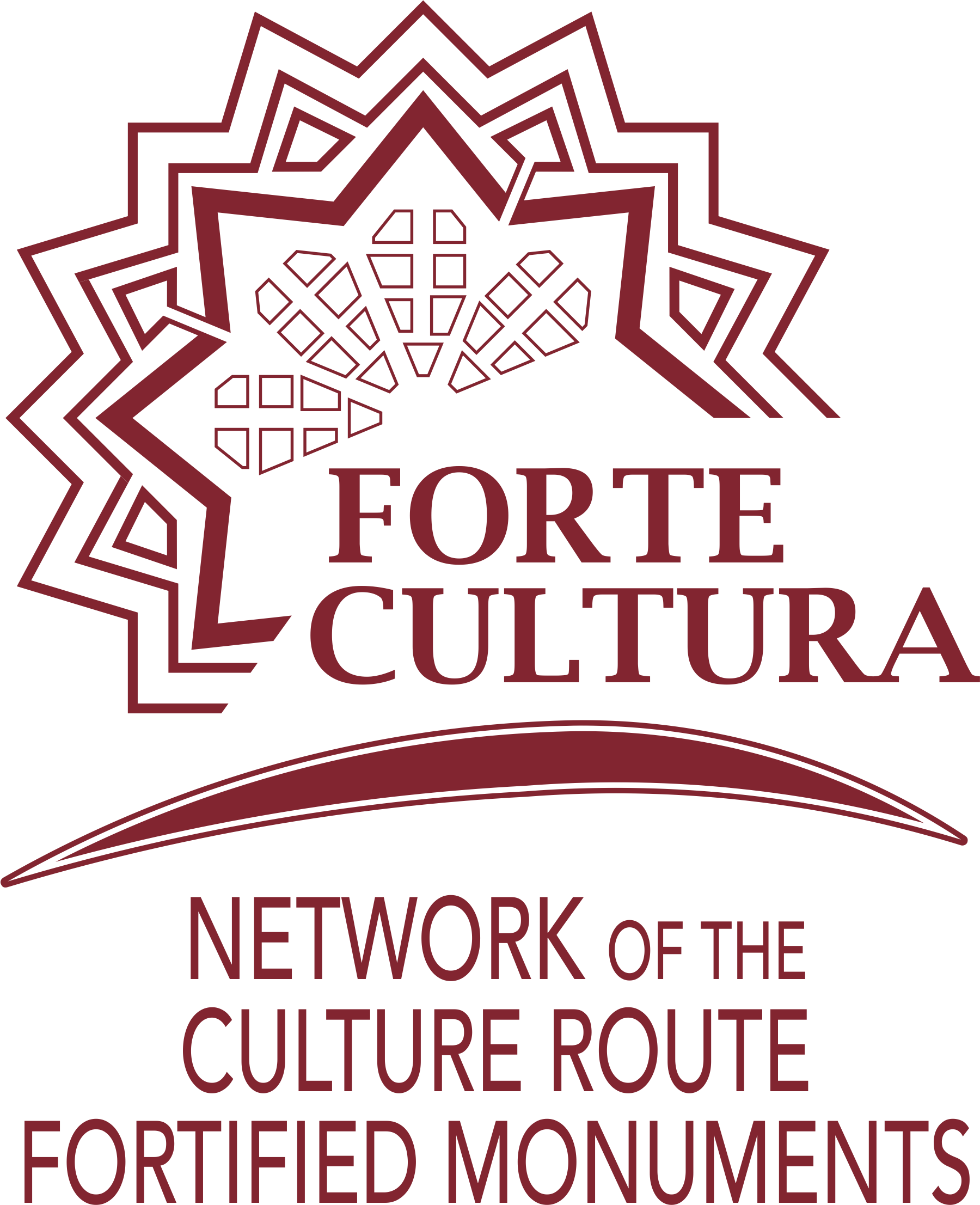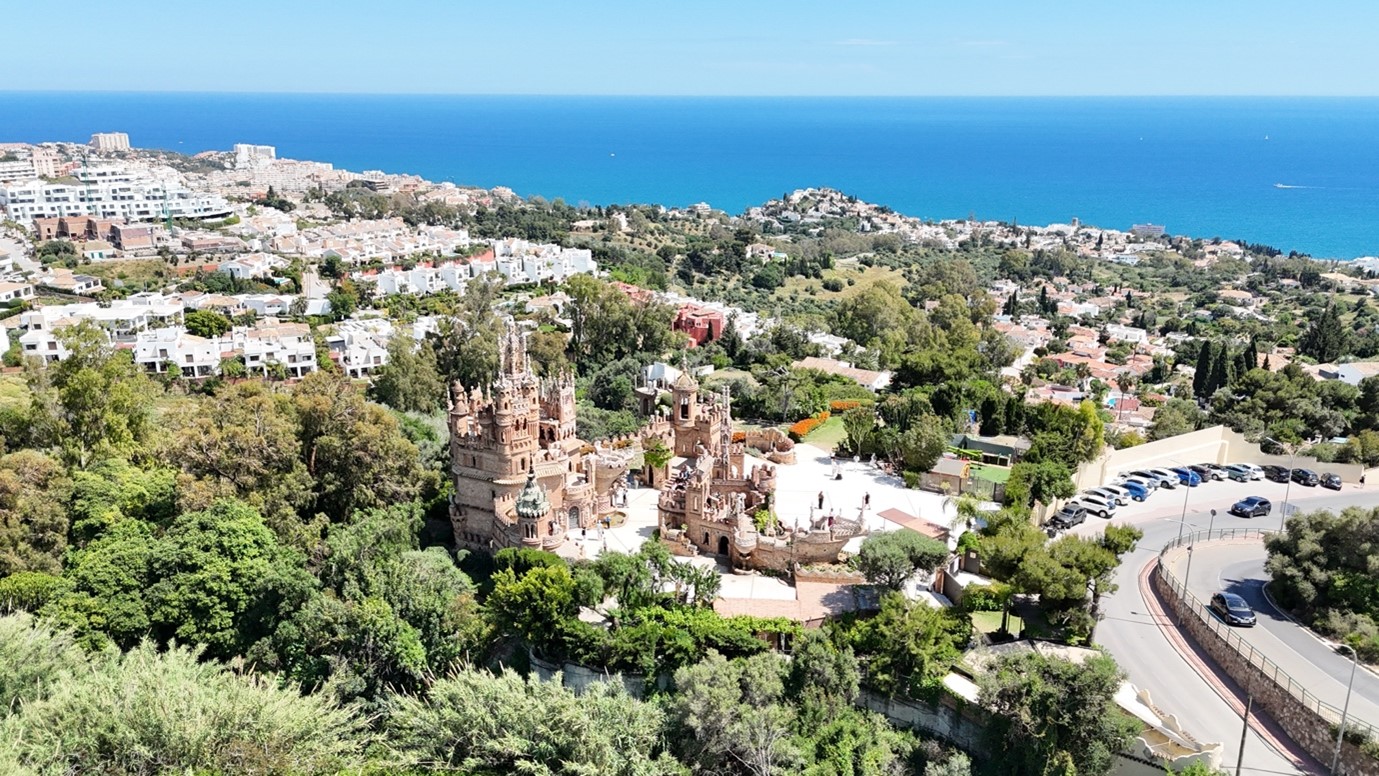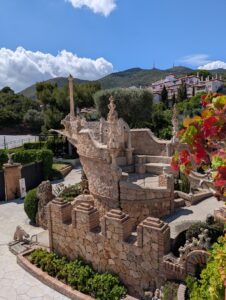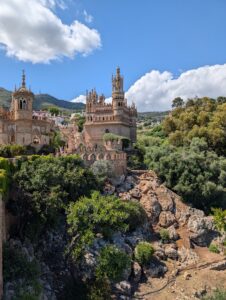Na rozświetlonych słońcem wzgórzach Benalmádena w Hiszpanii wznosi się ciekawa sylwetka - nie ze średniowiecza, ale ze zmierzchu XX wieku. Castillo de Colomares, zbudowany w latach 1987-1994, nie jest fortecą zrodzoną z wojny lub obrony, ale pomnikiem w formie zamku, poświęconym życiu i podróżom Krzysztofa Kolumba. Zajmuje imponującą powierzchnię 1500 metrów kwadratowych, co czyni go największym na świecie pomnikiem odkrywcy. Co ciekawe, mieści się w nim również najmniejszy kościół na świecie, zajmujący zaledwie 1,96 metra kwadratowego - kaplica, która jest bardziej poetycka niż praktyczna, raczej symboliczna niż uroczysta.
W 1987 roku dr Esteban Martín Martín, hiszpański lekarz z głęboką wiedzą na temat sztuki, architektury i historii, podjął się tego wyjątkowego przedsięwzięcia. Z pomocą zaledwie dwóch kamieniarzy poświęcił siedem lat na budowę Colomares metodami czysto rzemieślniczymi, pracując z cegłą, kamieniem i cementem. Bez oficjalnego wsparcia i wielkich funduszy, ta zainicjowana przez niego samego praca stała się fizyczną kroniką - którą dr Martín nazwał "kamienną narracją" odkrycia Ameryki. W rezultacie powstała struktura, która wymyka się konwencjonalnym kategoriom architektonicznym, łącząc style romański, gotycki, bizantyjski i mudejar w eklektyczną i symboliczną kompozycję. Pomnik nie jest wierną repliką żadnej historycznej fortecy, ale wizjonerską reinterpretacją formy zamku - naczynia pamięci, historii i hołdu.
Krytycy mogą podnosić brwi na takie hybrydowe kreacje, argumentując, że grozi to zniekształceniem historii lub oddaniem się kiczowi. I rzeczywiście, dla mnie jako architekta i historyka jest to nieco dziwne. Cenię sobie autentyczność, elementy obronne i logikę geometrii - dlatego moim ulubionym kierunkiem badań są bastionowe zamki z XVII wieku, w których strategia i forma są zjednoczone w kamieniu. Z tej perspektywy Colomares wydaje się bardziej snem niż fortem. Jednak marzenia też mają swoje miejsce.
Jako fotograf i miłośnik krajobrazów z rozległymi widokami, nie mogę powstrzymać się od przyciągnięcia go. Jest coś niezaprzeczalnie pociągającego w romantycznej sylwetce, którą rzuca, bogactwie jego tekstur i widokach, które otwiera na morze i niebo. Takie zabytki mogą nie być zgodne z historycznym rygorem, ale ich moc inspirowania i przyciągania jest niezaprzeczalna. Stały strumień odwiedzających, którzy przybywają do Colomares, dowodzi, że pragnienie połączenia się z przeszłością - jakkolwiek w wyobraźni - jest nadal bardzo żywe.
Czy zatem zamki można budować do dziś? Być może nie jako bastiony obrony czy władzy królewskiej, ale jako pomniki - jak najbardziej. Colomares stanowi poetyckie przypomnienie, że architektura wciąż może być naczyniem do opowiadania historii i upamiętniania. Nawet w naszej erze stali i szkła, ludzka dusza pozostaje oczarowana wieżami i blankami, łukami, które otwierają się na legendy i kamiennymi fasadami, które szepczą o odległych czasach.
Czego możemy nauczyć się od Colomaresa? Że osobista wizja wciąż ma moc inspirowania; że historia, interpretowana za pomocą języka architektury, może wykraczać poza daty i dane, stając się głęboko odczuwanym doświadczeniem. A co najważniejsze, że przeszłość - jakkolwiek odległa - wciąż może być budowana, a nie tylko wspominana.
Autor: Olha Tikhonova
Zdjęcia Olha Tikhonova





Dodaj komentarz